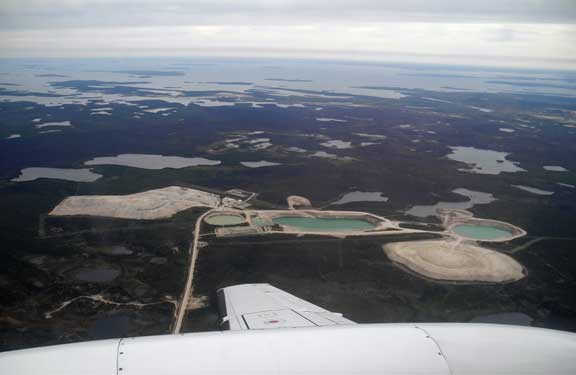Canada is the largest exporter of uranium ore in the world. Northern Saskatchewan is home to all of Canada’s uranium mines. Roughly half of the supply of uranium comes from mining; the balance comes from decommissioned nuclear weapons.
Uranium is mined in open pit and underground mines, sometimes along with copper and gold, and also by in-situ leaching. In-situ leaching requires pumping acid or alkaline solution underground and trying to recover the resulting solution once it contains enough uranium.
Uranium is toxic and radioactive and is silver-white in colour when refined. Uranium is used for nuclear power, nuclear weapons, and for medical isotopes.
The environmental effects of uranium mining include the contamination of ground water with dissolved metals and radioactive materials, dispersal of radioactive dust, and releases of radioactive gas into the air. When uranium ore is processed, 85% of the radioactivity is left behind in the tailings, and must be managed safely for hundreds of thousands of years.







